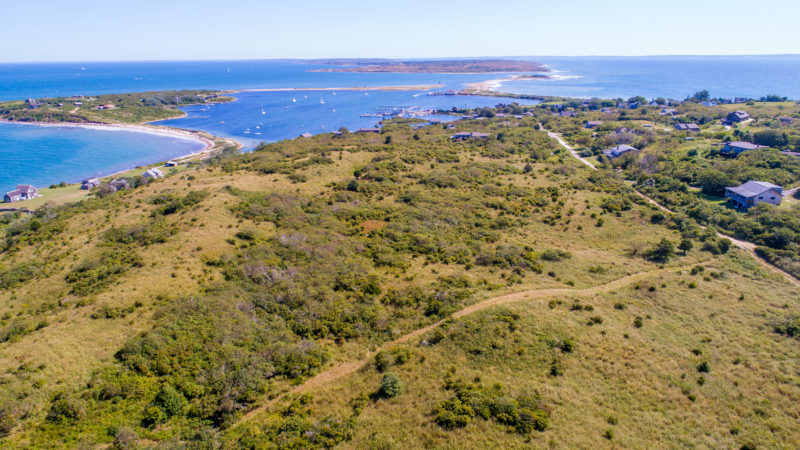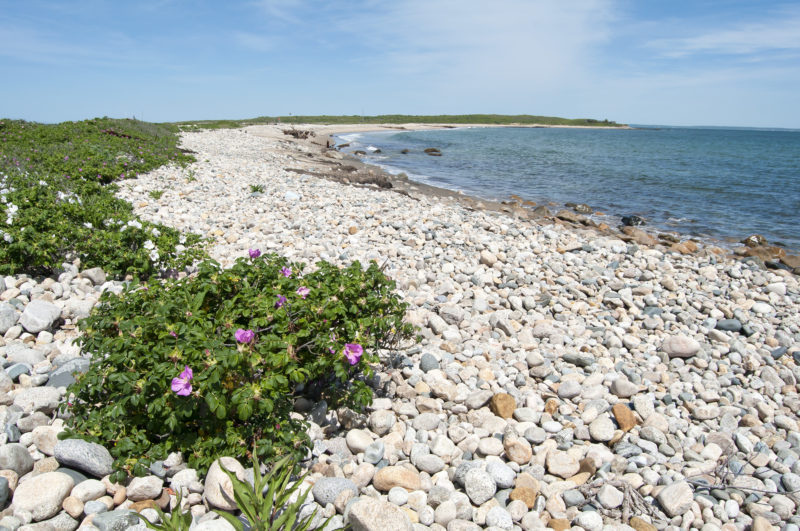Rhode Island groups support funding for Cuttyhunk protection
Every year, thousands of migratory birds are drawn to Cuttyhunk Island, with its stretches of largely undeveloped land at the end of the Elizabeth Islands chain. These birds don’t know or care whether this important stopover spot is part of Massachusetts or Rhode Island: so why should federal funding for their protection?
That’s the stance taken by four Rhode Island-based organizations, who recently urged the trustees of the Bouchard Barge 120 (B120) oil spill settlement to re-allocate funds, set aside for Rhode Island bird conservation projects, to the Coalition’s Cuttyhunk Conservation Project instead.

The preservation of Cuttyhunk Island offers the greatest coastal habitat protection opportunity in more than a generation on the coast of either Massachusetts or Rhode Island.
In August, the B120 Trustees released a draft restoration plan for common loon and other birds impacted by the April 2003 Bouchard Barge 120 oil spill in Buzzards Bay, which spread an estimated 98,000 gallons of oil into Buzzards Bay. This plan recommended $500,000 to the Cuttyhunk project, while setting aside $1,274,000 for a yet-to-be-determined restoration project in Rhode Island.
At the end of October, the Rhode Island and Massachusetts chapters of The Nature Conservancy, the Rhode Island Natural History Survey, the Sakonnet Preservation Association, and Save the Bay submitted comments to this plan recommending that the full $1.8 million for bird restoration in both Massachusetts and Rhode Island be directed to Cuttyhunk’s protection. The Coalition, the Gosnold Board of Selectmen, the entire Massachusetts Congressional Delegation – Senators Elizabeth Warren and Edward Markey, and Congressman William Keating – as well as State Senators Cyr, Montigny, and Rodrigues and State Representative Dylan Fernandes, also submitted comments in support of this re-allocation.
The funds under consideration come from a 2011 court settlement between the Bouchard Transportation Company and a council of Trustees – namely, the National Oceanic and Atmospheric Administration, the U.S. Fish and Wildlife Service, and the environmental resource departments of Rhode Island and Massachusetts. These Trustees are responsible for dispersing more than $6 million of damages from the settlement to projects that account for public losses to coastal access, recreational shellfishing and boating, and injuries to loons, sea ducks, and other coastal birds.
“The project as proposed will advance conservation in perpetuity on an island that is unique and that has extraordinary ecological value to the region that benefits both states near the RI/MA border,” wrote John Torgan, Rhode Island State Director, and Wayne Klockner, Vice President and Massachusetts State Director, in the Nature Conservancy’s joint letter. “We can think of no better way to make a meaningful difference to nature in the area and for the resources most directly damaged by the spill.”
Many of the public comments highlighted the fact that there is no project in Rhode Island comparable in scope or environmental benefit to the Cuttyhunk project, which will preserve over 300 acres of land and five miles of shoreline. By constructing these funding recommendations around an artificial state boundary, the Trustee Council overlooks the fact that the natural resources of Cuttyhunk, particularly bird habitat resources, are part of – and benefit – the coastal environment of Rhode Island.
“As you know, coastal ecosystems are not subject to state boundaries,” wrote Jonathan Stone, Executive Director of Save the Bay, in the organization’s public comment. “Migratory birds do not identify as Rhode Islanders, and all species using this portion of the Atlantic Flyway, including species impacted by the oil spill, will benefit from preserving the entire Cuttyhunk Project, identified as highest priority for conservation.”

The low dunes along Canapitsit Neck provide exceptional habitat for a wide variety of birds.
This project will allow the Coalition to purchase 67 acres of Cuttyhunk’s extraordinary natural landscape and place it under permanent protection. This includes the land atop Bayberry Hill and Haps Hill (also known as Lookout Hill), the highest points on the island and important stopover points for migratory birds. Along the shoreline, the Coalition will protect Church’s Beach, Copicut Neck, and Canapitsit Neck (also known as Barges Beach), where low dunes provide exceptional habitat for rare sea and shorebirds. Another 235 acres of land is being donated for protection as part of the deal.
All of these rich resources lie just 4.5 miles from the Rhode Island state line, and constitute part of a multi-state ecosystem that birds and marine animals use dynamically.
“When viewed from the sea, the southern New England coast is an archipelago, one coastal system of morainic islands and narrow bays in a shallow sea,” wrote David Gregg, Executive Director of the Rhode Island Natural History Survey. “It is a perspective we don’t usually get when we come to the shore from the land side, bound as we are by political and social identities … If we take the seaward perspective, it is clear how beneficial the project on Cuttyhunk will be for the natural system that does not stop at state lines.”
The Cuttyhunk Conservation Project has already received a generous $400,000 contribution from the Town of Gosnold, approved unanimously by town voters, as well as over $1.9 million in gifts and pledges from private individuals, families and foundations and nearly $2 million in other federal and state grants. The $500,000 funding currently recommended by the Trustees Council makes up just a fraction of the final $3 million needed to make this project a reality.
The preservation of Cuttyhunk Island offers the greatest coastal habitat protection opportunity in more than a generation on the coast of either Massachusetts or Rhode Island. Support for this project extends well across state lines; the Coalition and its partners advocate that restoration funding do the same.
The Trustee Council is currently reviewing all comments submitted and will make final recommendations on funding this winter.